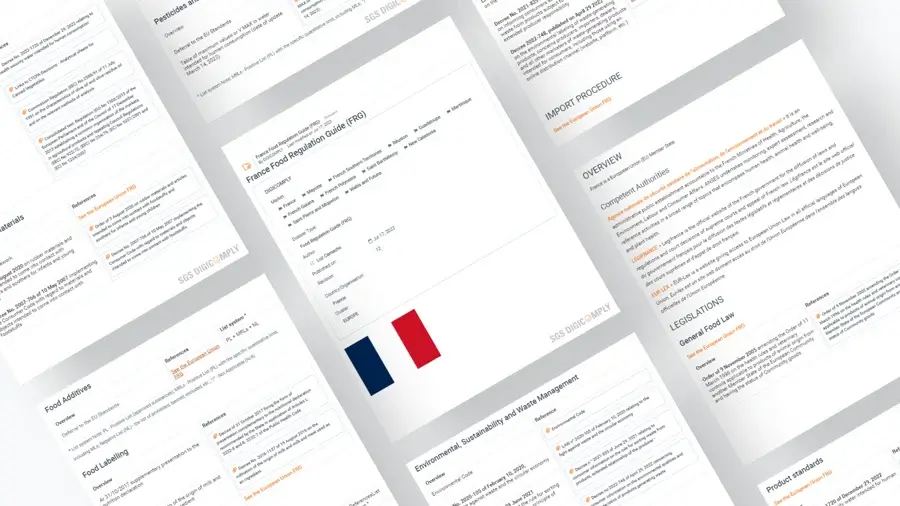What is Standing Committee on Plants, Animals, Food and Feed (PAFF Committee)
The Standing Committee on Plants, Animals, Food and Feed (PAFF Committee) is a crucial body within the European Union's framework for food safety and agricultural policy. Established under the European Commission, the PAFF Committee plays an instrumental role in ensuring that legislation related to food safety and animal health is effectively implemented and monitored across member states. Its primary objective is to safeguard public health, animal health, and plant health while facilitating the free movement of agricultural products within the EU.
Objectives and Responsibilities
The PAFF Committee is tasked with several essential responsibilities that directly impact the food industry:
- Regulatory Oversight: The committee reviews and provides feedback on legislative proposals related to food safety, animal health, and plant health. This process ensures that regulations are scientifically sound and practically applicable.
- Risk Assessment: By collaborating with various scientific bodies, including the European Food Safety Authority (EFSA), the PAFF Committee assesses risks associated with new food products and agricultural practices, ensuring that public health remains a priority.
- Coordination of National Policies: The committee facilitates coordination among EU member states, promoting uniformity in the implementation of regulations and standards. This reduces discrepancies that can arise from national interpretations of EU laws.
- Monitoring and Compliance: The PAFF Committee monitors compliance with established standards and can recommend corrective measures if member states fail to adhere to regulations.
Impact on the Food Industry
The PAFF Committee's influence on the food industry is profound, affecting various stakeholders from producers to consumers. Here are several key areas where its impact is particularly significant:
1. Enhancing Food Safety
Through its rigorous regulatory framework, the PAFF Committee enhances food safety standards across the EU. The committee's evaluations help prevent foodborne illnesses, ensuring that products on the market are safe for consumption. This focus on safety not only protects consumers but also fosters confidence in the food supply chain.
2. Promoting Sustainable Practices
The committee advocates for sustainable agricultural practices by assessing the environmental impacts of different farming methods. By encouraging the adoption of sustainable practices, the PAFF Committee contributes to the long-term viability of the agricultural sector, ultimately benefiting the food industry by promoting ecological balance and resource conservation.
3. Facilitating Trade
The harmonization of food safety standards across member states simplifies the trade of agricultural products within the EU. By establishing clear regulations and ensuring compliance, the PAFF Committee minimizes barriers to trade. This creates a more competitive market, benefiting producers and consumers alike by providing access to a wider variety of safe, high-quality food products.
4. Supporting Innovation
With its focus on scientific assessment and regulatory transparency, the PAFF Committee creates an environment conducive to innovation within the food industry. Companies can confidently invest in research and development, knowing that there is a systematic process for evaluating new products and technologies. This support for innovation is crucial for addressing emerging challenges in food production and safety.
5. Responding to Crises
The PAFF Committee plays a vital role in crisis management within the food sector. In the event of a food safety incident, the committee can quickly mobilize to assess the situation, coordinate responses among member states, and implement necessary measures to protect public health. This rapid response capability is essential for maintaining consumer trust and ensuring the integrity of the food supply chain.
Future Directions
As the food industry evolves, the PAFF Committee faces new challenges and opportunities. Key areas of focus for the future include:
- Adaptation to Technological Advances: The rise of biotechnology and novel food products necessitates ongoing evaluation of regulatory frameworks to ensure they remain relevant and effective.
- Climate Change Mitigation: Addressing the impacts of climate change on agriculture will be pivotal. The PAFF Committee will need to integrate climate resilience into food safety and agricultural policies.
- Consumer Awareness and Education: Enhancing consumer understanding of food safety regulations and practices is essential for fostering informed choices and maintaining public trust.
Conclusion
The Standing Committee on Plants, Animals, Food and Feed (PAFF Committee) serves as a cornerstone of food safety and agricultural policy within the EU. By overseeing the implementation of regulations, assessing risks, and promoting sustainable practices, the committee considerably impacts the food industry. As it adapts to future challenges, the PAFF Committee will continue to play a vital role in ensuring the safety, sustainability, and innovation of food systems across Europe.





